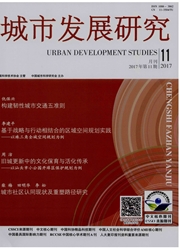

 中文摘要:
中文摘要:
生态城真的具有节能环保的性能而具有可推广性吗?基于环境全影响的分析思路,以中新天津生态城为例,并运用LCA方法测算了生态城与普通城的环境影响偏差。结果显示:(1)以建筑和交通作典型分析,生态城要比普通城的环境全影响小,绿色建筑比普通建筑的环境全影响可减少11.2%,电动汽车比传统燃油汽车的环境全影响可减少14.8%;(2)以汽车作为典型消费行为,建筑作为典型生产行为来比较的话,电动汽车所改进的环境全影响是绿色建筑的26倍,即,生态城内居民消费行为要比生产行为的环境影响大。这表明,生态城环境全影响的首要因素是居民的生态友好型消费偏好。因此,实现生态城改进环境影响目标的有效手段是设立门槛,以使入住生态城的居民真正具有生态友好型消费偏好。
 英文摘要:
英文摘要:
Does the eco-city really has the function of energy saving and environmental protection? And could it be generalized? Based on the analysis of the full environmental impact conception,we used the life cycle assessment method to measure the environmental impact deviation between Sino-Singapore Tianjin Eco-city and the general city. The result shows that:( 1) The full environmental impact of a green building than a general one decreases by 11. 2%,and an electric vehicle's full environmental impact can be reduced by 14. 8% than a traditional fuel one. It means that the full environmental impact of an eco-city is smaller than a general one.( 2)Comparing the full environmental impact between the electric vehicle and the green building,which separately stands for the consuming behavior and the producing behavior,we found that the former is 26 times than the latter. This means that the full environmental impact of residents' consuming behavior is much higher than the producing behavior. It also means that the primary factor affecting the ecocity‘s environment is residents 'consuming behavior. Therefore,the fundamental value of the eco-city is to distinguish different consumer preferences,only by setting up the threshold and guiding residents' eco-friendly consumption preference,can we effectively realize eco-city's value.
 同期刊论文项目
同期刊论文项目
 同项目期刊论文
同项目期刊论文
 期刊信息
期刊信息
